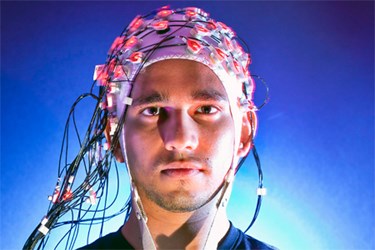Using Neural Messages For Prosthetic Control
By Chuck Seegert, Ph.D.

In order to initiate movement, many advanced prostheses sense muscular cues from the stump of the amputee. The work of a Mexican research team, however, hopes to bypass that type of control and link directly to the brain. Their bold vision is for a patient to manipulate their prosthesis just by imagining motion.
Researchers at the Centre for Research and Advanced Studies (CINVESTAV) believe it may be possible to initiate movement patterns based on brain signals and EEG data. In order to do this, however, an amputee must have had a limb to begin with.
“First, it is necessary to know if there is a memory pattern to remember in the amputee’s brain in order to know how it moved and, thus, translating it to instructions for the prosthesis," said Roberto Muñoz Guerrero, researcher at the department of electrical engineering and project leader at CINVESTAV, in a recent press release from Investigacion y Desarrollo.
In cases where the patient has never had a limb, perhaps due to congenital defects or failure to develop, it is thought that developing movement patterns able to control prosthesis are less likely.
In order to develop their new prostheses, the research team must characterize EEG data and brain waves produced when movement is imagined — a challenging task. Due to the large amount of data the brain processes, singling out the key differences that are associated with the imagined movement will be difficult.
"Therefore, the first step is to recall the patterns in the EEG and define there the memory that can be electrically recorded. Then we need to evaluate how sensitive the signal is to other external shocks, such as light or blinking," Guerrero said in the press release.
Mechanical and electronic systems are required for this design as well, including all the components necessary to interpret brain signals and to activate the mechanical portions of the device. The materials to construct the prosthesis are undefined at this early stage, but must be constrained by a weight limit of 2 to 3 kilograms — the weight of a normal arm.
Establishing direct communication between the prosthesis and the brain is a topic in bioelectronics called brain computer interface (BCI). Progress in the field using this approach was recently reported in an article on Med Device Online. Similar approaches have been used by other researchers to facilitate movement in paralyzed limbs.
Image Credit: Investigacion y Desarrollo
